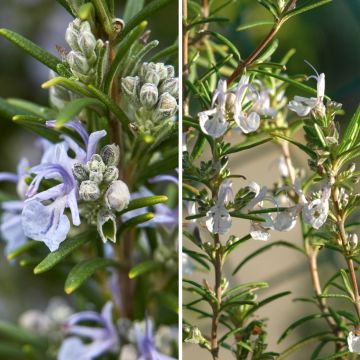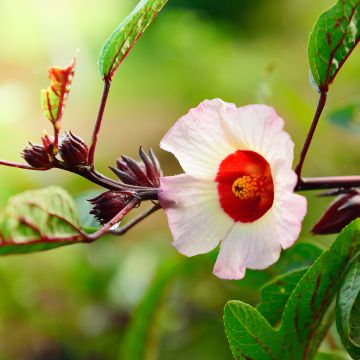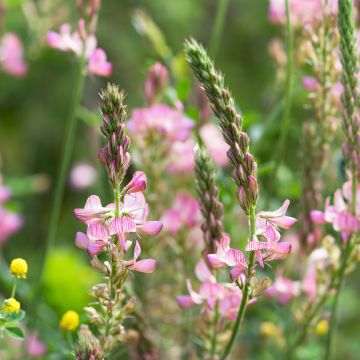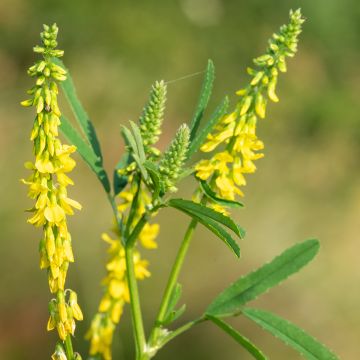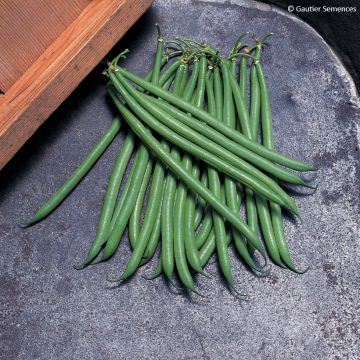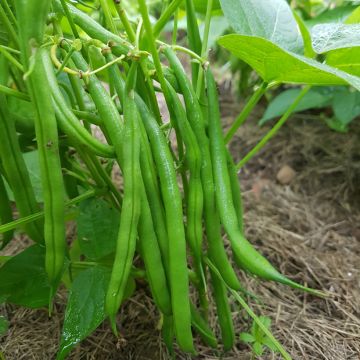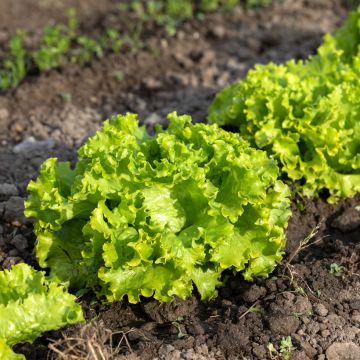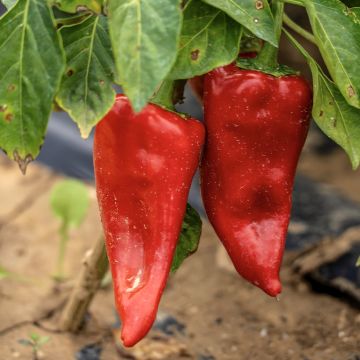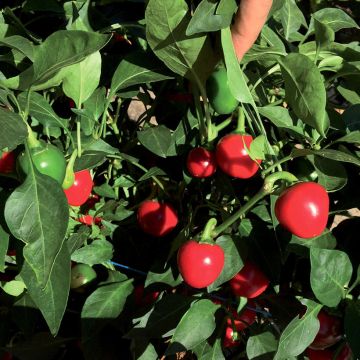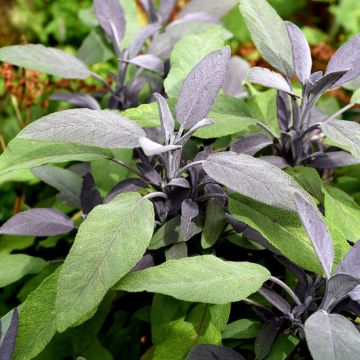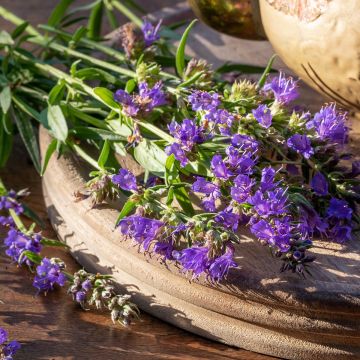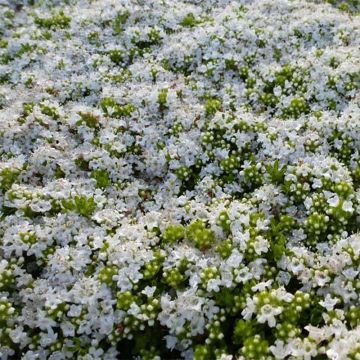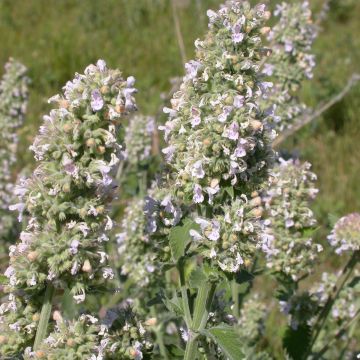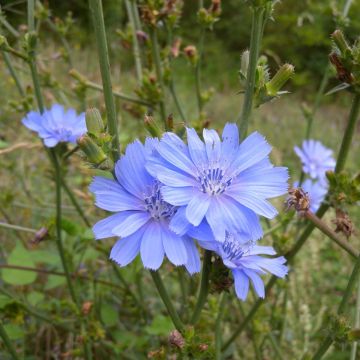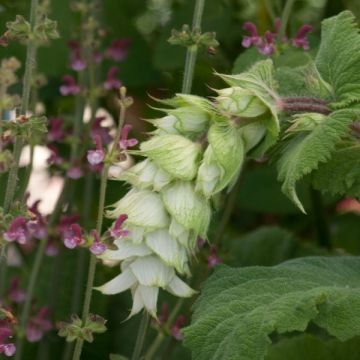

Alliaire officinale ou Herbe à ail - Alliaria petiolata
Alliaria petiolata
Alliaria petiolata
Garlic mustard, Garlic wort, Garlic root, Hedge garlic, Jack-in-the-bush, Jack-by-the-hedge, Penny hedge, Poor man's mustard, Sauce-alone
Special offer!
Receive a €20 voucher for any order over €90 (excluding delivery costs, credit notes, and plastic-free options)!
1- Add your favorite plants to your cart.
2- Once you have reached €90, confirm your order (you can even choose the delivery date!).
3- As soon as your order is shipped, you will receive an email containing your voucher code, valid for 3 months (90 days).
Your voucher is unique and can only be used once, for any order with a minimum value of €20, excluding delivery costs.
Can be combined with other current offers, non-divisible and non-refundable.
Why not try an alternative variety in stock?
View all →This plant carries a 6 months recovery warranty
More information
We guarantee the quality of our plants for a full growing cycle, and will replace at our expense any plant that fails to recover under normal climatic and planting conditions.
Description
Alliaria petiolata, or garlic mustard, is a biennial plant from our flora that is both edible and medicinal. Its leaves have a slight garlic taste, its spring stems have a slightly sweet taste reminiscent of cabbage, and its root has a flavour somewhat similar to radish. Its leaves can be finely chopped to enhance salads, used in compound butter, or included in pesto. Its seeds can also be used as a condiment instead of mustard. Let the plant go to seed, where it will furnish the garden or vegetable patch with spontaneous seedlings. This forgotten condiment plant should be brought back to our gardens.
Garlic mustard belongs to the Brassicaceae family. It is a cousin of rapeseed, mustard, and watercress. It is a hardy biennial herbaceous plant common in Europe, classified as a ruderal plant. It is found in hedges, wastelands, embankments, and thickets, mostly on limestone and clay soils. In the first year, the plant produces a tuft of green heart-shaped leaves with wavy edges, emitting a garlic smell when crushed. It flowers in the second year, from April to June. The plant produces hairy stems that reach an average height of 60cm (24in), depending on growing conditions. Branched inflorescences with cross-shaped white flowers form in the upper part of the stems. The flowers are pollinated by insects. They give way to long fruits called siliques. These siliques contain seeds that can be harvested and sown from March to August the following year. The plant dies after producing its flowers and seeds, but it can persist through underground budding at the root level.
Harvest: the leaves should be harvested as needed. The young spring leaves and stems have a milder flavour than summer vegetation. Use fresh leaves on the same day. Roots can be harvested before flowering.
Usage: finely chop the raw leaves in salads, in compound butter, or in pesto. The roots can be enjoyed like radishes. Garlic mustard does not have the disadvantages of garlic: it does not leave the consumer with the characteristic bad breath!
Garlic mustard can be planted in a vegetable garden, in well-prepared, loosened soil enriched with compost. The soil should remain slightly moist throughout the growing and flowering season, but not waterlogged. It can also be grown in pots and containers, but will need regular watering. Plant it in a sunny position, but not scorching. In full summer, the leaves will remain more tender if the plant is slightly shaded in the afternoon.
Tips: sow the seeds you have collected in autumn or early spring (the seeds need cold to germinate). Water regularly in summer if the weather is dry. If it gets very hot, protect your plants by placing overturned crates on top of them.
Report an error about the product description
Alliaria petiolata in pictures
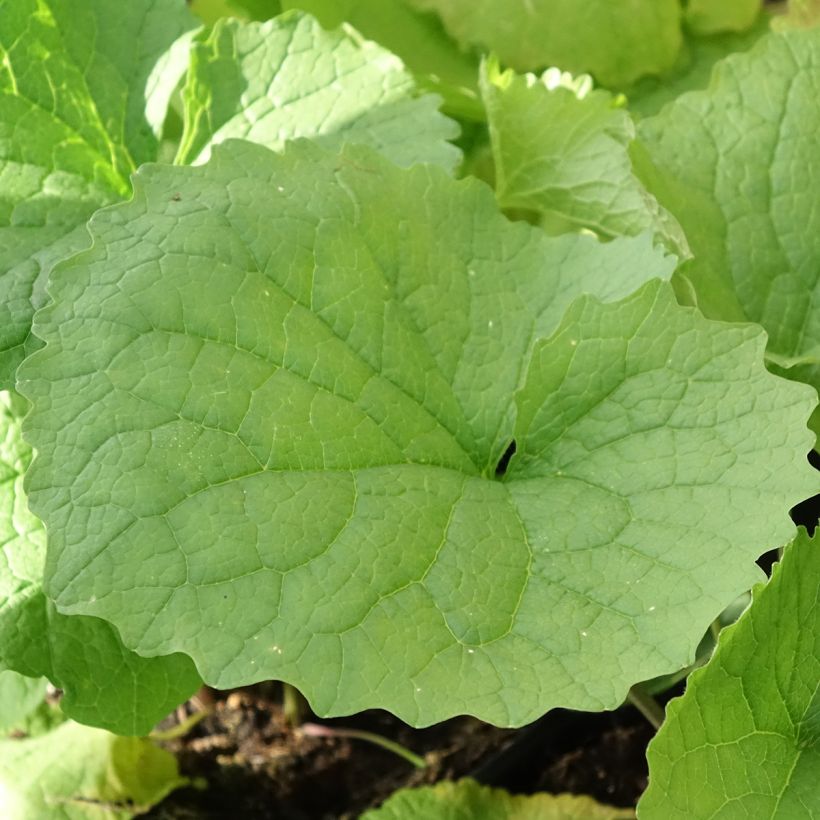

Harvest
Plant habit
Foliage
Planting and care
Grow in loose soil, enriched with compost. The soil should remain slightly moist. It prefers clay-limestone soils, but it is quite tolerant and grows spontaneously in many regions, except where the soils are too acidic. Water during summer if the weather is hot and dry. Avoid planting in a hot exposure, as the leaves will be tougher and develop a stronger flavour. Provide shade for your plants if needed using overturned crates. It is a hardy plant. Let some flowers produce seeds so you can sow them again the following year.
Sowing
Sow directly in place, either broadcast or in rows spaced 40cm (16in) apart, in autumn or early spring. A period of cold is necessary to induce seed germination. Lightly cover the seeds with soil and water. Thin out the young plants when rosettes form, keeping only one every 40cm (16in).
Cultivation
Care
Intended location
This item has not been reviewed yet - be the first to leave a review about it.
Similar products
Haven't found what you were looking for?
Hardiness is the lowest winter temperature a plant can endure without suffering serious damage or even dying. However, hardiness is affected by location (a sheltered area, such as a patio), protection (winter cover) and soil type (hardiness is improved by well-drained soil).

Photo Sharing Terms & Conditions
In order to encourage gardeners to interact and share their experiences, Promesse de fleurs offers various media enabling content to be uploaded onto its Site - in particular via the ‘Photo sharing’ module.
The User agrees to refrain from:
- Posting any content that is illegal, prejudicial, insulting, racist, inciteful to hatred, revisionist, contrary to public decency, that infringes on privacy or on the privacy rights of third parties, in particular the publicity rights of persons and goods, intellectual property rights, or the right to privacy.
- Submitting content on behalf of a third party;
- Impersonate the identity of a third party and/or publish any personal information about a third party;
In general, the User undertakes to refrain from any unethical behaviour.
All Content (in particular text, comments, files, images, photos, videos, creative works, etc.), which may be subject to property or intellectual property rights, image or other private rights, shall remain the property of the User, subject to the limited rights granted by the terms of the licence granted by Promesse de fleurs as stated below. Users are at liberty to publish or not to publish such Content on the Site, notably via the ‘Photo Sharing’ facility, and accept that this Content shall be made public and freely accessible, notably on the Internet.
Users further acknowledge, undertake to have ,and guarantee that they hold all necessary rights and permissions to publish such material on the Site, in particular with regard to the legislation in force pertaining to any privacy, property, intellectual property, image, or contractual rights, or rights of any other nature. By publishing such Content on the Site, Users acknowledge accepting full liability as publishers of the Content within the meaning of the law, and grant Promesse de fleurs, free of charge, an inclusive, worldwide licence for the said Content for the entire duration of its publication, including all reproduction, representation, up/downloading, displaying, performing, transmission, and storage rights.
Users also grant permission for their name to be linked to the Content and accept that this link may not always be made available.
By engaging in posting material, Users consent to their Content becoming automatically accessible on the Internet, in particular on other sites and/or blogs and/or web pages of the Promesse de fleurs site, including in particular social pages and the Promesse de fleurs catalogue.
Users may secure the removal of entrusted content free of charge by issuing a simple request via our contact form.
The flowering period indicated on our website applies to countries and regions located in USDA zone 8 (France, the United Kingdom, Ireland, the Netherlands, etc.)
It will vary according to where you live:
- In zones 9 to 10 (Italy, Spain, Greece, etc.), flowering will occur about 2 to 4 weeks earlier.
- In zones 6 to 7 (Germany, Poland, Slovenia, and lower mountainous regions), flowering will be delayed by 2 to 3 weeks.
- In zone 5 (Central Europe, Scandinavia), blooming will be delayed by 3 to 5 weeks.
In temperate climates, pruning of spring-flowering shrubs (forsythia, spireas, etc.) should be done just after flowering.
Pruning of summer-flowering shrubs (Indian Lilac, Perovskia, etc.) can be done in winter or spring.
In cold regions as well as with frost-sensitive plants, avoid pruning too early when severe frosts may still occur.
The planting period indicated on our website applies to countries and regions located in USDA zone 8 (France, United Kingdom, Ireland, Netherlands).
It will vary according to where you live:
- In Mediterranean zones (Marseille, Madrid, Milan, etc.), autumn and winter are the best planting periods.
- In continental zones (Strasbourg, Munich, Vienna, etc.), delay planting by 2 to 3 weeks in spring and bring it forward by 2 to 4 weeks in autumn.
- In mountainous regions (the Alps, Pyrenees, Carpathians, etc.), it is best to plant in late spring (May-June) or late summer (August-September).
The harvesting period indicated on our website applies to countries and regions in USDA zone 8 (France, England, Ireland, the Netherlands).
In colder areas (Scandinavia, Poland, Austria...) fruit and vegetable harvests are likely to be delayed by 3-4 weeks.
In warmer areas (Italy, Spain, Greece, etc.), harvesting will probably take place earlier, depending on weather conditions.
The sowing periods indicated on our website apply to countries and regions within USDA Zone 8 (France, UK, Ireland, Netherlands).
In colder areas (Scandinavia, Poland, Austria...), delay any outdoor sowing by 3-4 weeks, or sow under glass.
In warmer climes (Italy, Spain, Greece, etc.), bring outdoor sowing forward by a few weeks.






























